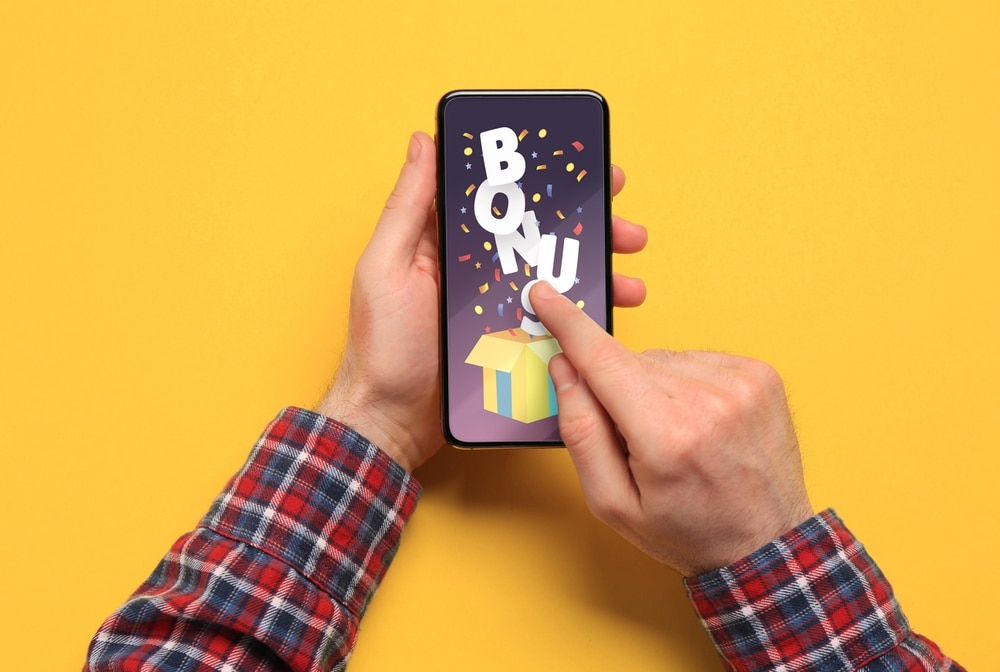Has someone suggest you learn how to utilize Guerrilla Marketing? You’re at the right place! Launching a business is both exhilarating and daunting. In a crowded marketplace, standing out without a massive advertising budget can seem impossible.

Enter guerrilla marketing-a creative, unconventional, and often low-cost approach that enables even the smallest startup to make a big splash. If you’re new to marketing, this comprehensive guide will show you exactly how to utilize guerrilla marketing to build buzz, grow your brand, and connect with your audience in unforgettable ways.
What Is Guerrilla Marketing?
Guerrilla marketing is an advertising strategy that uses surprise, creativity, and unconventional tactics to promote a product, service, or brand. Unlike traditional marketing, which relies on expensive media buys and broad messaging, guerrilla marketing is about making a memorable impact with minimal resources. The term was coined by Jay Conrad Levinson in his 1984 book Guerrilla Marketing, inspired by the unpredictable, strategic tactics of guerrilla warfare.
Key traits of guerrilla marketing:
- Low cost: Relies on imagination and time, not big budgets.
- Creativity: Focuses on originality and surprise to capture attention.
- Hyper-targeted: Designed for specific audiences or communities.
- Experiential: Often involves direct interaction, creating memorable experiences.
- Shareable: Aims to spark word-of-mouth and viral social media sharing.
Guerrilla marketing is a cornerstone of modern marketing because it breaks through the noise, leverages digital virality, and allows small businesses to compete with much larger rivals.
The History and Evolution of Guerrilla Marketing
The origins of guerrilla marketing are rooted in the need for small businesses to compete with big brands. Jay Conrad Levinson’s vision was to empower entrepreneurs to use creativity and resourcefulness instead of deep pockets. Early tactics included graffiti, flyers, and stunts in public spaces. As technology and consumer behavior evolved, so did guerrilla marketing. Today, it includes:
- Flash mobs and viral videos
- Experiential pop-up events
- Ambient marketing (unexpected ads in everyday places)
- Social media stunts
- Influencer partnerships
- Interactive installations
The common thread? Each campaign aims to surprise, engage, and leave a lasting impression.
Where Is Guerrilla Marketing Used?
Guerrilla marketing thrives wherever people gather, both online and offline. Its flexibility is one of its greatest strengths. Common environments for guerrilla marketing:
- Urban spaces: Sidewalks, parks, public transit, and city landmarks are prime spots for outdoor stunts, installations, and street art.
- Events: Concerts, sports games, festivals, and conventions offer opportunities for ambush marketing and interactive experiences.
- Retail locations: Pop-up shops, creative window displays, and in-store experiences can surprise and delight customers.
- Online platforms: Viral videos, hashtag challenges, and influencer collaborations amplify offline campaigns and reach new audiences.
- Community spaces: Cafés, bulletin boards, and local hangouts are perfect for grassroots campaigns like sticker drops or local partnerships.
Guerrilla marketing can be adapted to nearly any business or setting. The key is to choose locations and tactics that align with your audience and brand identity.
Why Guerrilla Marketing Works for New Businesses
Guerrilla marketing is a game-changer for startups and small businesses. Here’s why it’s so effective:
- Budget-Friendly: You don’t need a big budget-just creativity and effort.
- Precise Targeting: Campaigns can be tailored to reach your ideal customers, whether that’s a local neighborhood or a specific online community.
- Amplifies Unique Value: It’s a powerful way to showcase what makes your business different.
- Builds Emotional Connections: Surprising, interactive campaigns create memorable experiences and foster loyalty.
- Generates Organic Buzz: Unconventional tactics are more likely to be shared, both in person and online.
- Challenges the Status Quo: Positions your brand as innovative and bold, helping you stand out in a crowded market.
- Creates Lasting Impressions: People remember experiences, not just ads.
How to Utilize Guerrilla Marketing: 12 Actionable Tips for Business Owners
Ready to launch your first guerrilla marketing campaign? Follow these twelve steps to maximize your impact.

1. Identify Your Target Audience
Understanding your audience is the foundation of any successful campaign. Who are your ideal customers? Where do they spend their time? What grabs their attention? Use surveys, social media insights, and customer data to build a detailed profile.
Example:
A local gym discovered their target audience frequented nearby coffee shops and parks, so they placed witty fitness-themed chalk art in those areas.
2. Set Clear Objectives
Define what you want to achieve-brand awareness, leads, sales, or something else. Clear goals help you design focused campaigns and measure success.
Example:
A new café aimed to increase weekday foot traffic by 30% over two months with a guerrilla campaign involving free samples and pop-up events.
3. Embrace Bold Creativity
Think outside the box. The best guerrilla marketing campaigns are surprising, memorable, and sometimes even a little risky. Don’t be afraid to break the mold.
Example:
GOLDTOE dressed the famous Wall Street bull statue in giant underwear to launch a new product line-simple, cheeky, and unforgettable.
4. Leverage Public Spaces
Transform everyday environments into your marketing canvas. Sidewalk chalk, murals, installations, or even temporary art can stop people in their tracks.
Example:
A children’s bookstore painted a mural of storybook characters on a nearby wall, with a QR code linking to a special store discount.
5. Encourage Audience Participation
Interactive experiences are more memorable and more likely to be shared. Invite your audience to join in, play, or create with you.
Example:
A juice bar set up a “spin the wheel” game outside their store, offering prizes like free drinks or branded merchandise for anyone who played.
6. Integrate with Social Media
Amplify your guerrilla marketing by encouraging people to share their experiences online. Create hashtags, run contests, or offer incentives for posts.
Example:
A flower shop launched a “find the golden rose” scavenger hunt, rewarding those who posted photos with the hashtag #GoldenRoseHunt.
7. Partner with Local Influencers
Local micro-influencers or respected community members can help spread your message authentically and affordably.
Example:
A new café invited popular local food bloggers to a secret menu tasting, resulting in organic buzz and social shares.
8. Host Flash Mobs or Pop-Up Events
Organize a surprise performance or a temporary pop-up shop to engage and delight your target audience.
Example:
T-Mobile’s flash mob at Liverpool Street Station became a viral sensation, winning awards and boosting sales by 52%.
9. Try Wild Posting and Stickers

Posters and stickers in unexpected places can be highly effective, especially if they’re visually striking or humorous.
Example:
A tech repair shop distributed stickers shaped like cracked phone screens on public benches and bus stops, with a message: “We fix it!”
10. Gamify Your Campaigns
Games and challenges are fun, shareable, and can drive people to your store or website.
Example:
A toy store hid small toys around the city and posted clues on their social media, rewarding the finders with store discounts.
11. Collaborate with Other Businesses
Team up with complementary local businesses for joint guerrilla campaigns. This expands your reach and builds community goodwill.
Example:
A bakery and a coffee shop co-hosted a “Breakfast on the Go” event, handing out free samples at a busy transit station.
12. Measure, Adapt, and Improve
Track your results using simple metrics like foot traffic, social media mentions, coupon redemptions, or website visits. Learn what works, refine your approach, and keep experimenting.
Example:
A smoothie bar gave out coupons during a street art event and tracked how many were redeemed, learning which locations and tactics were most effective.
Real-World Examples of Guerrilla Marketing
Seeing guerrilla marketing in action can spark your own ideas. Here are a few standout campaigns:
- IKEA’s Urban Sofas: IKEA placed sofas at bus stops in Australia, turning mundane commutes into cozy, shareable moments.
- GOLDTOE’s Wall Street Bull: Dressing the famous bull statue in underwear was cheeky, simple, and generated massive media coverage.
- T-Mobile’s Flash Mob: A surprise dance at Liverpool Street Station went viral, winning awards and boosting sales.
- Custom Frame Store’s Coupon Blitz: Offering coupons in creative ways increased foot traffic and online buzz.
- Cartoon Network’s LED Signs: While controversial, the campaign generated huge attention (and a lesson in risk management).
Guerrilla Marketing and Modern Marketing
Guerrilla marketing is a vital part of modern marketing because it aligns with today’s consumer preferences:
- Authenticity: People crave real, memorable experiences over generic ads.
- Shareability: Social media amplifies creative campaigns far beyond their original audience.
- Community: Localized, grassroots tactics foster genuine connections.
- Cost-effectiveness: Small businesses can compete with big brands by being nimble and inventive.
Potential drawbacks: Guerrilla marketing can be unpredictable. Poorly planned stunts may backfire or be misunderstood, so always consider public perception and local laws.
Step-by-Step: How to Plan Your Guerrilla Marketing Campaign
- Research and Brainstorm
- Analyze your target audience and competitors.
- Gather your team and encourage free thinking. Use mind mapping and brainstorming sessions to spark ideas.
- Set SMART Objectives
- Make your goals Specific, Measurable, Achievable, Relevant, and Time-bound.
- Develop Your Creative Concept
- Focus on originality, relevance, and the element of surprise.
- Ensure your campaign aligns with your brand values and voice.
- Plan Logistics and Permissions
- Choose locations and partners carefully.
- Secure any necessary permits for public installations or events.
- Prepare Materials and Team
- Design visuals, props, or installations.
- Train staff or volunteers to engage with the public authentically.
- Launch and Promote
- Use social media and local influencers to build anticipation.
- Document the campaign for further sharing and analysis.
- Measure and Analyze
- Track engagement, reach, and results using simple KPIs.
- Collect feedback and use insights to refine future campaigns.
Guerrilla Marketing: Dos and Don’ts
Do:
- Be respectful of public spaces and local laws.
- Keep your message clear and on-brand.
- Encourage participation and sharing.
- Start small and scale up as you learn what works.
Don’t:
- Imitate others without adding your unique twist.
- Rely on shock value alone-connect it to your brand’s story.
- Forget to measure results and adapt.
- Ignore feedback or potential backlash.
Guerrilla marketing empowers new business owners to make a big impact with limited resources. By focusing on creativity, surprise, and authentic engagement, you can cut through the noise and build lasting relationships with your audience. Start with one or two ideas from this guide, adapt them to fit your brand, and don’t be afraid to experiment. In the world of modern marketing, boldness and originality are your greatest assets.
